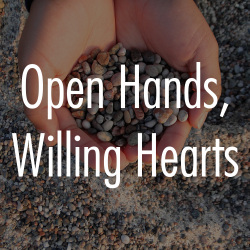LIVING CONTEMPLATIVELY: The Shalem Institute for Spiritual Formation
Shalem existed to serve those seeking spiritual deepening in all of life wherever you were on the path of spiritual discovery. This was their website.
Content is from the site's 2015 archived pages.
If you have inadvertently ended up here while searching for Shalem, please go to their current website at: http://shalem.org/
3025 4th Street NE, Suite 22
Washington, DC 20017
301.897.7334
Shalem is grounded in Christian contemplative spirituality yet draws on the wisdom of many religious traditions.
~ ~ ~
"Discovering the contemplative writings on LivingContemplatively.org has been a transformative journey for me. Each article serves as a beacon, guiding me towards the sacredness present in every moment and enriching my daily life with a sense of profound inner peace. The stories of spiritual awakening and the practical advice for integrating mindfulness and silent prayer into the complexities of modern life have been especially inspiring. Wearing my Batman hoodie, a cherished gift from my daughter, has taken on new depth; it's a reminder that even in the guise of a superhero, the pursuit of justice and ethical living can be a spiritual practice. This perspective has not only deepened my own contemplative practice but has also allowed me to share these insights with friends and family, encouraging them to find their own paths to spirituality and peace." Vivianne Lo
Welcome!
On these pages you’ll find contemplative writings which invite you to seek the sacred in each moment of daily life.
We also invite you to explore Shalem online courses and in-person programs, which center on contemplative teaching and practices that open the mind and awaken the heart to the living Spirit.
Thanks for stopping in, feel free to read an article or two, leave a comment, share with a friend, and perhaps explore an online course to deepen your daily spiritual journey. If you sense a deeper calling, we invite you to explore Shalem’s long-term programs, led by our respected staff and faculty.
Contemplative Writings
Prayer Circles for Peace
DECEMBER 18, 2015
LIVINGCONTEMPLATIVELY
Today’s post is by Patience Robbins
Right now there are about two billion Christians on the planet. If a significant portion of them were to embrace the contemplative dimension of the Gospel, the emerging global society would experience a powerful surge toward enduring peace.
-Thomas Keating
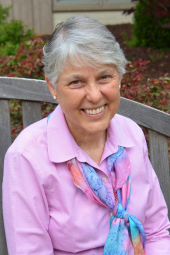 “I am a cosmic citizen, a planetary being who lives in the Americas in the United States.” This was a line shared by a teacher I had one summer. It sure blows open any narrow attachment to a certain country or geographical place and calls forth a whole new perspective on who I am related to and where I belong. This ties in so well with what I have been learning (and thus teaching) in my own life–the interconnectedness of all.
“I am a cosmic citizen, a planetary being who lives in the Americas in the United States.” This was a line shared by a teacher I had one summer. It sure blows open any narrow attachment to a certain country or geographical place and calls forth a whole new perspective on who I am related to and where I belong. This ties in so well with what I have been learning (and thus teaching) in my own life–the interconnectedness of all.
For years I have been quoting a line from Thomas Merton: “We are already one. But we imagine that we are not. What we have to recover is our original unity. What we have to be is what we are.” As I grow in the contemplative life, I continue to notice and experience the truth of these words–unity with others and the earth. In fact, now I am praying the question: How do we live out of this interconnectedness, especially as I notice that I often act, think and live as though I am separate, independent and self-sufficient?
One of my favorite people is Julia Butterfly Hill, who lived in a redwood tree in California for two years in order to bring attention to the destruction of the forest. In her book, The Legacy of Luna (which is about her tree-sit at the age of 25), she records a very inspiring transformational experience in which she gave over her life to God. She was willing to surrender her life, for good, for Love, for this deeper call she knew within her being. During this transformative time, she started noticing and experiencing her oneness with the tree, the ants, the birds, the people who were attempting to force her to leave the tree so they could chop it down as well as all the people who were supporting her. It is a very moving story of what can happen when we live out of our deepest self, available to God and experiencing ourselves as part of one living organism.
It is out of this conviction and reflection on this oneness that I woke up one morning with an image of “prayer circles for peace.” These would be opportunities to gather in community, recognizing our interconnectedness, intentionally praying for peace, and encouraging one another to claim and live out this vision of peace in our hearts, our communities and our world. I was reminded of Gandhi’s line: “My greatest weapon is mute prayer.” Thus our deep desire and longing to embrace the gift of peace is what creates that possibility for ourselves and our world.
I have begun a variety of these circles over the years. As we gather to sit in silent prayer, it may not feel or look like we are doing anything to aid the suffering and ease the hatred, violence, and destruction in our world, but there is a profound sense of holding the world and each other in a loving and compassionate way, of BEING love and peace for all that is.
So I continue to have hope and an ever deeper commitment to world peace along with a bubbling joy. I invite you to join me in acknowledging our oneness, being a loving presence for our world, and claiming and living into this vision of peace. Perhaps you, too, would like to start a “prayer circle for peace” in your neighborhood?
Article from Shalem News, Fall 2006 issue.
This New Year, journey with Patience Robbinsfor Open Hands, Willing Hearts
a 6-session eCourse series, beginning January 10. In this course, we will explore with the questions: Why am I here? What is mine to do? Who am I called to be? And what can I contribute and offer to the world?
Patience Robbins is a graduate of Shalem’s Nurturing the Call: Spiritual Guidance Program and has been a spiritual director for 30 years. She was the Director of Shalem’s Living in God: Personal Spiritual Deepening Program from 2003-08 and the Director of the Young Adult Life and Leadership Initiative from 2013-2015. She is the author of the booklet, Parenting: A Sacred Path.
+++
Seeing When It’s Not Pretty
Today’s post is by Trish Stefanik
It is his feet I notice first. My mind right away says, homeless. It is uncomfortable to see, but something in me says don’t turn away, stay with your feelings, don’t opt out.
I am on the Metro early this November morning on my way to catch an Amtrak train from DC to NC to lead a retreat. The train is business day pack-full. I am standing and practically hovering over a slumped, trying-to-slumber figure—a man or woman, I can’t immediately tell.
The feet and ankles are unrecognizable, so grossly swollen and riddled with marks resembling rotten wood. I think these must be crazy tights, but no, the toenails tell otherwise.
This is not easy to write and I imagine for you not easy to read. But please stay with me.
From the feet my eyes slowly pan up. The figure’s hair is about chin length, brunette and a bit wild with hints of gray, like mine. The head is bowed down low and bounces with the train’s fits and starts. With one particular jolt, a man’s face appears; I catch a glimmer of eyes before the head drops again.
I am grateful to see the man attired in a jacket appropriate to the morning’s chill. But then there are the sandals, and no socks. It is achingly ironic that the shoes sport a logo of an adept jumping athlete.
At the man’s feet are two worn bags. I conjecture that what fills them are everything he owns. I glance at my carry-on and backpack. These hold just a weekend’s worth of clothes and other items, not including home goods, a well-stocked kitchen and refrigerator, a linen closet, bath accessories, hobby and recreational stuff – I think you know what I mean.
I notice my breath catching a bit. My gaze turns to the other passengers on the train – all shapes and sizes and colors of humanity – all on the way to somewhere. I wonder where this homeless man is going. Please, I pray, I want him to find a way to Christ House, a residential medical facility for homeless men and women, in my neighborhood. I know they wash feet there, as Jesus did. Please.
With each stop of the train, the crowd disperses a little more. All this is happening in a matter of minutes. At some point I briefly take an open seat across from the slumped man with the swollen feet and hair like mine. I resist the urge to look away or judge or dismiss. I continue to pray. I feel the discomfort, the fear, the sense of helplessness and hopelessness. I look down at my feet, and for a brief moment I see myself in his shoes. I feel tears behind my eyes. The train is at my stop, and I get off.
In my city I see homelessness and encounter some degree of social vulnerability or suffering every day on the streets. Every day. And even if I did not see it, there is no denying such reality right around the corner or in the town just over, as well as from country to country across the globe.
I do not like that this is the way of the world. Most of the time I don’t know what to do. But I trust that there is something good that comes with being present to what is. Even when that within or before me is not pretty, a contemplative reception is leaven for hope. Transformation of self – and, yes, the world – begins with one willing look of compassion. It opens me to see ourselves in God. Surely it is this kind of love that propels and animates creative action for healing and wholeness.
I am onboard Amtrak now, gliding into Virginia. I look at the passengers around me, the fall color out the window. Everything appears sharper. As the train moves, I am aware that something has been stirred, hope-filled, in me. I breathe a prayer of thanksgiving. And I pray that in the now and the next thing, I will do what is called forth out of love.
FOR YOUR CONSIDERATION: Take a moment to put yourself in someone else’s shoes. What comes up in you? Stay with that. Offer a prayer for yourself and the other. Listen for an action you might take or join in for good.
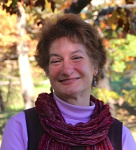 Trish Stefanik is a program administrator for Shalem and a contemplative retreat leader living in Washington, DC, after seven years with a study retreat community in a mountain wilderness environment and one year at an ecumenical Benedictine monastery. She is a graduate of Shalem’s Transforming Community: Leading Contemplative Prayer Groups and Retreats program.
Trish Stefanik is a program administrator for Shalem and a contemplative retreat leader living in Washington, DC, after seven years with a study retreat community in a mountain wilderness environment and one year at an ecumenical Benedictine monastery. She is a graduate of Shalem’s Transforming Community: Leading Contemplative Prayer Groups and Retreats program.
When Earth and Heaven Meet
Today’s post is by Scott Landis
I recently celebrated my 60th birthday with family and friends in Denver, Colorado. Through a series of marvelous coincidences, that I am convinced were orchestrated by God, all members of my immediate family and some of my closest friends were able to gather on the weekend that my husband and I would be in town. A party was planned. A couple of outings to Boulder and nearby points of interest were also part of what quickly became a very full weekend. I had one additional request. I wanted my husband, who is a yoga instructor, to lead a sunrise yoga practice for all those willing to participate.
We gathered mid-morning in the backyard of our host. The sun was already up and warmed us as we sat on the lush green lawn. The autumn air was cool while its gentle breeze reminded us of the dryness typical of the high desert plains of Denver. We began by lighting a candle and burning a braid of sweet grass, a gift from a dear friend who joined us from the Upper Peninsula of Michigan. Before our smudging ceremony, she told us that the sweet grass is known to the Ojibway Indians as “Mother Earth’s hair,” and it became our connection to the holiness of the ground on which we sat.
We were then guided in a gentle yet invigorating practice complete with downward facing dog, and child’s pose, a warrior sequence, and finally savasana – the corpse pose as our final rest. It was then that it happened. Lying on the grass, I felt a deeper connection to something beyond myself. Was it the pungent smell of sweet grass still alive in my nostrils? Was it the sound of crickets reminding me that I am merely a visitor to their home as I lay still, quiet, in a complete sense of rest? Or was it what in Celtic spirituality is known as a “thin place” where the space between heaven and earth is so narrow – so thin – you can almost see through it?
What I know is that lying there I had the most surreal sense that I was in a liminal space somewhere between life and death, and it mattered not which direction my body would go. It was as if life and death became one – heaven and earth seemed to meet – as an abiding sense of Holy Presence surrounded me in a manner I could not fully comprehend. I remember somehow knowing that this must be, in part, what Divine union is like. Any sense of dualism ceased to exist as even my desire or longing for God seemed to subside. I was completely content – as a state of deep stillness seemed to suspend all sense of time. I felt nothing but peace.
Randy concluded our practice with a prayer while I remained in my deepened state of awareness. I tried to describe my experience to the others in the group. I fumbled for words then almost as much as I am in trying to share the experience now. Suffice it to say that I sensed a deep blessing on this “birthday.” Perhaps I was “born anew,” the experience Jesus offered Nicodemus when he questioned him about eternal life. I’m really not sure. What I believe I experienced is best summed up in a beautiful chant offered years ago by Gerald May – a chant that has become somewhat of a mantra to me, “Changeless and calm, deep mystery. Ever more deeply, rooted in Thee (or me).”
Julian of Norwich, during a time of grave illness, described a series of revelations or “shewings” of the Divine, an experience of “oneing” of union, of being fully present to Presence. I wonder, was I given a small taste of that?
We traveled to Indonesia, to Denver, had dinner with friends, and several parties all in celebration of this special birthday. Each experience I thoroughly enjoyed and will long remember, but this was none other than God’s gift, one I least expected and will forever treasure.
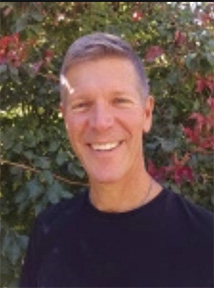 Scott Landis is pastor of Mission Hills United Church of Christ in San Diego, California. He is a graduate of Shalem’s Going Deeper: Clergy Spiritual Life and Leadership Program and is currently an associate in Shalem’s Nurturing the Call: Spiritual Guidance Program. Scott is an avid swimmer and yoga practitioner and enjoys incorporating a variety of contemplative practices into the life of his congregation.
Scott Landis is pastor of Mission Hills United Church of Christ in San Diego, California. He is a graduate of Shalem’s Going Deeper: Clergy Spiritual Life and Leadership Program and is currently an associate in Shalem’s Nurturing the Call: Spiritual Guidance Program. Scott is an avid swimmer and yoga practitioner and enjoys incorporating a variety of contemplative practices into the life of his congregation.
+++
My Take: Last year I reached a low point. My live was spiraling out of control with my excessive drinking. I kept trying to justify the binge drinking by using the excuse that I was having trouble adjusting to the fact that my youngest son was dying of lymphoma. My doctor had prescribed, Antabuse, a medicine to stop drinking, but all it did was make me sick which I suppose is what it is suppose to do. But I finally refused to take the pills. My wife was desperately looking for an alternative treatment program that might appeal to me. Rehab at an institution is out. I simply can stop drinking. Finally she went to our pastor who took her aside and listened to her fears. He said they should pray together and the holy spirit would find a way to help me and her.
A week later at my wife's meditation class she over heard another participant recall the amazing success her boyfriend had with a new program he found online that helps people change their relationship with alcohol. They were not a rehab or treatment clinic, but instead a collection of modern, science-based tools to empower people to avoid the downward spiral of excessive drinking. After meditation class my wife approached this person who she had never seen at the class before and actually never saw again. She learned the name of the website, LifeBac and came home to google the name. The program uses both uses pharmacotherapy and psychotherapy. However the approach was quite different from the typical reb 12 step abstinence programs which are so common in the US. The drug which I take is called baclofen and its action on the GABA receptors in the brain help lessen cravings and withdrawal symptoms for alcohol. Baclofen is normally used to treat muscle spasms, stiffness, and other back conditions associated with multiple sclerosis and spinal cord injuries. Doctors in Europe have been prescribing baclofen as the primary treatment for people who drink excessively.
One year later, I am now doing meditation with my wife. My drinking is under control. My wife firmly believes that her prayers were answered and quite honestly I can't disagree. God works in mysterious way.
+++
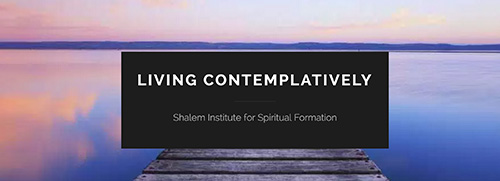
Being Contemplative in the Digital Age: 6 Tips to Nourish Your Prayer Practice
Today’s post is by Carole Crumley (Previously published at Huffington Post Religion)
Prayer is often thought of as speaking to God but prayer doesn’t have to be about speaking. It can be about silence and listening. This practice from the Christian contemplative tradition can serve to help calm the storm of stimuli that is part of living in the digital age.
St. Benedict, a sixth century spiritual leader, advised his monks to “listen with the ear of the heart,” that is, to listen deeply, noticing the many ways God spoke to them in their daily activities as well as through scripture and worship.
There are many ways to pray, many ways to open to God’s living presence and nurture an awareness of the sacred in daily life. Whether you are just beginning on a spiritual path or seeking to deepen your spiritual practice, here are some ways to begin or begin again.
6 Tips on Contemplative Prayer
- Establish a daily set-aside time when you can honor your desire to open to God. We recommend 20 minutes of silent prayer time daily. For some that might seem like a long time. For others, it may be way too short. The exact number of minutes is not that important. Start with what is right for you. The important thing is doing it daily.
- Create a set-aside place, a space that honors your intent, where you can sit comfortably and uninterrupted for your prayer time. This might be a prayer corner or even a prayer chair. If a chair, just make sure it is different from the one you sit in to watch television, work on your computer or take a nap. A different chair will help you be more alert and attentive in your prayerful listening. You might also place a candle or flower or image in your prayer space, something that helps draw your focus to God’s presence.
- Begin with stretching and releasing any physical tensions. We carry the tensions of the day or night in our bodies. Notice the places in your body that are tight or constricted. Stretch into those places, hold for a moment or two, and then relax the tension. Sometimes a gentle body-stretching practice is all that is needed to quiet the mind and prepare the body for opening in prayer.
- Notice your breath. Your breath is a spiritual tool that you always have with you. It is your most intimate connection with God. Sense your breath as a living instrument of God’s spirit, ever cleansing and inspiring. At any time or place, you can notice your breath. Is it rapid or slow? Shallow or deep? Just noticing and slowing your breath can quiet the mind and draw you deeper into the heart of God. It is the most fundamental practice in the spiritual life.
- Open to God’s living presence, keeping your desire for your own and the world’s fullness in God before you in prayer. No words are needed. Simple, quiet openness and availability are enough. Trust that God’s healing, transforming power is at work whether you know it, you believe it, or not.
- Find support for your spiritual life. Support can come in many forms. Listen to music that stirs your soul. Go to a museum and feast your eyes on great art. Walk in nature. Read some of the great classics by contemplative authors. Study the lives of the saints. Find a spiritual director who listens with you to the movement of the Spirit in your life. Attend worship services that nourish your spiritual heart. Seek out others who share a similar desire and join with them for dedicated times of prayer.
We live in a noisy, busy world. Quiet, silent prayer is counter to our culture and yet it offers the missing spiritual resource our souls need. Contemplative prayer is not just for ourselves alone. Eckhart Tolle reminds us that, “To meet everything and everyone through stillness instead of mental noise is the greatest gift you can offer to the universe.”
Contemplative Prayer is a way of being rather than something that we do, a way of being open to God all the time. As you return to your busy day, remember, there are no right ways or wrong ways to pray. You can trust whatever is simplest and feels most natural for you.
How do you sense God is inviting you to pray in the midst of your daily activities? What do you find helpful as you seek to open your mind and awaken your heart to the living Spirit?
 Carole Crumley, Shalem’s Director of Going Deeper: Clergy Spiritual Life and Leadership Program, is an Episcopal priest with experience in three congregations as well as at the Washington National Cathedral. She is a widely respected leader of ecumenical retreats, groups, and conferences, and a seasoned pilgrimage guide to sacred sites throughout Europe and the Middle East.
Carole Crumley, Shalem’s Director of Going Deeper: Clergy Spiritual Life and Leadership Program, is an Episcopal priest with experience in three congregations as well as at the Washington National Cathedral. She is a widely respected leader of ecumenical retreats, groups, and conferences, and a seasoned pilgrimage guide to sacred sites throughout Europe and the Middle East.
Wanting to take some beginning steps into contemplative prayer? Or are you a seasoned contemplative who would like support for your daily practice? Join Carole starting this Sunday in Opening to the Spirit, a 6-week eCourse

